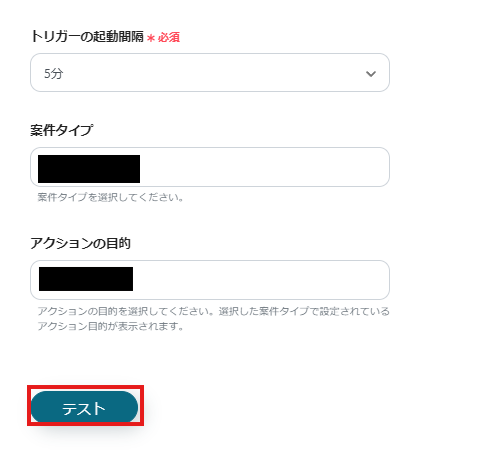Integration of Mazrica and GitHub with My Apps
After copying the template, register Mazrica and GitHub in Yoom's My Apps as a preliminary step.
※ If you have already registered, please proceed to "Step 1. Setting the App Trigger".
<Procedure>
1. After logging into Yoom, click "My Apps" → "+ New Connection" in order

2. Search for the app name and enter the required information

If Mazrica and GitHub are displayed in the My Apps list, the preparation is complete!
Let's proceed to the detailed settings immediately!
Step 1. Setting the App Trigger
First, click on the app trigger "When a project action is newly registered".

On the first page, the account information linked in advance will be displayed, so please check it.
If there are no issues, click "Next".

On the next page, set up the API connection.
Specify the "Project Type" and "Purpose of Action", then click Test.
※ Note that the "Trigger Activation Interval" varies depending on your subscription plan, so please be aware. For details, please seehere.

If there are no issues up to this point, click "Save" to complete the trigger settings.
Step 2. Creating an Issue
Next, click "Create Issue".

On the first page, the account information will be displayed as in Step 1, so if there are no issues, click "Next".
On the second page, set up the registration for the Issue.
"Owner Name", "Repository Name", and "Title" are required fields. It is recommended to use the information output from Mazrica for the "Title".
Other fields are optional, so fill them in as needed.

Click "Test" and if no errors occur, click "Save".
If a popup like the one below appears, all settings are complete.

Other Automation Examples Using Mazrica and GitHub
Yoom offers numerous automation examples using Mazrica and GitHub.
It is possible to integrate with various apps, so please refer to the following representative examples.
1. Add to Notion when a project action is registered in Mazrica
For those using Notion for internal documents and data management, please refer to the following template.



















.avif)
.avif)
.avif)
.avif)





